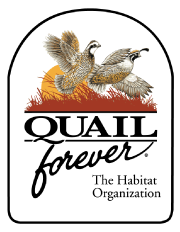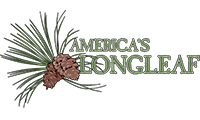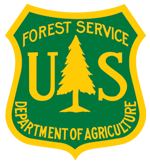Kicking Out Cool Season Grasses
Making the switch from cool-season grasses to native warm-season grasses is a great place to start for both improving quail habitat on a property, as well as establishing drought resistant forage for cattle producers. As a recent study from the University of Tennessee shows, bobwhite quail significantly benefit from pastures that have grazed, native warm-season grasses over the cool-season pastures common across today’s “fescue belt,” a region that stretches across the Midwest. Native warm-season grasses also provide forage during the “summer slump,” when non-native, cool-season grasses don’t produce sufficient forage.
Tackling a pasture of cool-season grasses can seem overwhelming, but foliar spraying can be an effective place to start when converting cool-season pasture to native warm-season grasses and forbs.
Foliar spraying is applying herbicide directly to the leaves of a plant. This, done in conjunction with prescribed fire, is an effective method for removing unwanted grass species. Joshua Marshall, Senior Quail Forever Farm Bill Wildlife Biologist from Missouri, recommends either spraying in the spring before native plants have greened up or in the fall after the first hard frost when native plants go into dormancy. Glyphosate, Clethodim or Imazapic are all effective herbicides, but each has different advantages and disadvantages. A Quail Forever Farm Bill Biologist can help landowners determine which option would be best for them. As with all herbicide applications, it’s essential to wear the right personal protective equipment, which may include long pants and long sleeves, protective gloves and a respirator. Avoid foliar spraying on high wind days so to avoid wind drift.
A good first step is to survey the area where the treatment is occurring to see if there are desirable native plants present that may emerge after treatment. If a property has remnant prairie, it may lower the cost of seeding native plants as there may already be sufficient dormant seed that just need the right conditions to make a comeback.
Haying or burning before spraying can help to ensure that the spraying is effective. In pastures with a thick layer of thatch, there may not be enough direct contact with short growing, newly sprouting grass, or newly emerging weeds if the extra plant material isn’t removed beforehand. Additionally if weed pressure is a concern a herbicide that has residual properties can be used and it will need soil contact for that residual to be effective. Marshall also recommends that when using prescribed fire to clear away the thatch, it’s best to wait to spray until the grass has put on four to six inches of new growth. Oftentimes, a follow up spray may be necessary in the fall or spring after the initial treatment to ensure cool-season grasses don’t reemerge.
“As far as equipment goes, there are low-cost options available for landowners who want to use this conservation practice,” says William Robinson, Missouri Senior Farm Bill Biologist. “At the most basic level, this can be accomplished with a simple backpack sprayer or a sprayer you can mount to the back of an ATV. Some local Quail Forever chapters or soil and water conservation districts may also have sprayers that landowners can rent.”
Once a cool-season grass pasture has been sprayed, landowners have a few options for next steps. If it’s believed the area is remnant prairie, reseeding may not be necessary, but for seeding native plants, a variety of methods can be used. Broadcasting seed, either by hand or by an ATV mounted broadcaster is the cheapest method. Alternatively, some local soil and water conservation districts may have no-till seed drills available for renting at relatively low cost. In the case of broadcasting, Marshall recommends 60% bare ground for the best germination results. This can be accomplished through burning or haying the grass thatch after treatment. Multiple sprays may be needed depending on timing, conditions and persistence. Keeping an eye out for annual weeds can help ensure these undesirable plants don’t become unmanageable.
When it comes to foliar spraying, this method doesn’t have to be limited to converting entire pastures to native plants. Strip planting or block planting can be an effective way or maximizing the usable space in a pasture, especially if rotational grazing is used.
“Fence rows alone account for thousands of acres of habitat that are often overlooked,” says Robinson. These fence row sprayings can be an opportunity for a landowner to test their practice and to convert unproductive or low productivity areas of a property into wildlife habitat.
Through USDA's Working Lands for Wildlife, landowners can gain financial and technical assistance for implementing conservation work on their land. To learn more about foliar spraying and other conservation practices available for landowners, contact a local Quail Forever biologist or NRCS office.


























